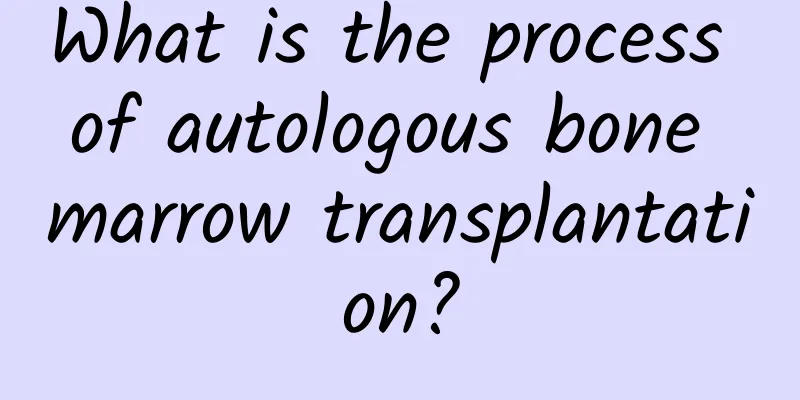What is the process of autologous bone marrow transplantation?

|
Bone marrow transplantation should be a relatively effective treatment method in today's medical treatment. Of course, it will have the opposite effect for some diseases that are not suitable for transplantation. Regular examinations should be conducted to fully understand the body's condition and decide whether to use a bone marrow transplant. Due to the difference in the transplant objects, it is divided into autologous and allogeneic transplantation. So, what is autologous bone marrow transplantation? Although allogeneic transplantation has a good therapeutic effect on acute leukemia, most patients lack suitable marrow donors and the high cost of transplantation is greatly limited. As an alternative to allogeneic transplantation, autologous bone marrow transplantation has developed rapidly in recent years. "Autologous" means using the patient's own bone marrow for transplantation. Once a physician has evaluated a patient's condition and decided to proceed with a stem cell transplant, the next step is to collect enough stem cells from the patient for transplantation, at least enough for two transplants, or more. After autologous stem cell transplantation, it is difficult to completely kill myeloma cells with ultra-high doses of chemotherapy and radiotherapy, so residual cancer cells may cause the patient to relapse. After relapse, you can choose to have another autologous transplant, which is why you need to collect enough stem cells for two transplants, or more. If the disease cannot be controlled after several autologous transplants and drug treatments, allogeneic stem cell transplantation and other treatments that are still in the experimental research stage can be considered. Autologous bone marrow transplantation is a procedure in which the hematopoietic stem cells are separated from the patient during the remission phase of the disease or when the malignant tumor has not invaded the bone marrow. After being processed to remove any remaining leukemia cells, they are frozen and then transfused back into the patient after pretreatment with radiotherapy or chemotherapy. After 20 to 40 days, the patient's immune function can be fully restored to normal. |
<<: What are the methods to stop nausea during chemotherapy?
>>: What to do if you have scars on your lips?
Recommend
What to do if bitten by a dog
Dogs are relatively human-like animals and they a...
What methods does Traditional Chinese Medicine use to treat eczema?
Traditional Chinese medicine has a very long hist...
What is phlebitis?
Phlebitis mainly refers to inflammation of veins,...
Diarrhea after moxibustion
From the perspective of traditional Chinese medic...
Don’t be too aggressive the first time, or you may end up losing more than you gain
Some patients with coronary heart disease insist ...
Effects and functions of Achyranthes bidentata and Eucommia ulmoides decoction
Niuqi Eucommia Soup is a common decoction for tre...
Can I eat fish if I have urticaria?
Urticaria is a common skin disease in life. There...
How do babies behave when they are frightened?
Babies are easily frightened. For example, talkin...
Teach men to make 7 kinds of kidney-tonifying and aphrodisiac wines
When it comes to a man's face, sexual ability...
What are the effects and functions of Danpi
Danpi is also called Danpi. It is a Chinese medic...
Chinese herbal formula to improve sleep
Insomnia is a very distressing experience for peo...
Is laser treatment for onychomycosis reliable?
Onychomycosis is a very stubborn disease. Once it...
There is a white skin on the baby's leg. Is it vitiligo?
If parents find a piece of white skin on their ba...
What should I do if my belly swells after giving birth?
For many women, being a mother is a very happy th...
Characteristics of lymph node metastasis in thyroid cancer
Thyroid cancer is a relatively common tumor, whic...









